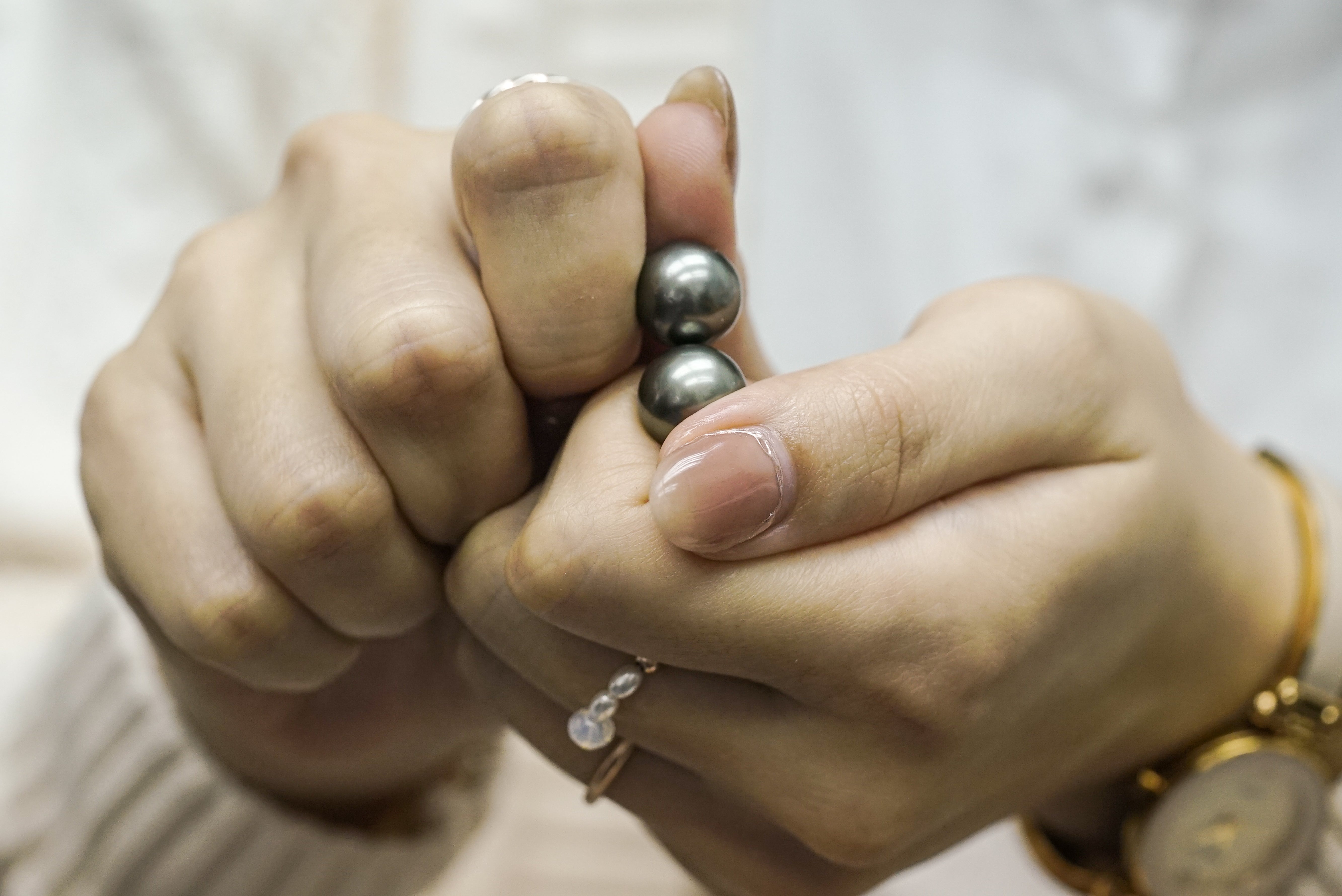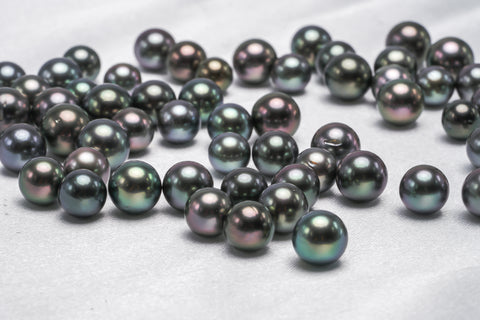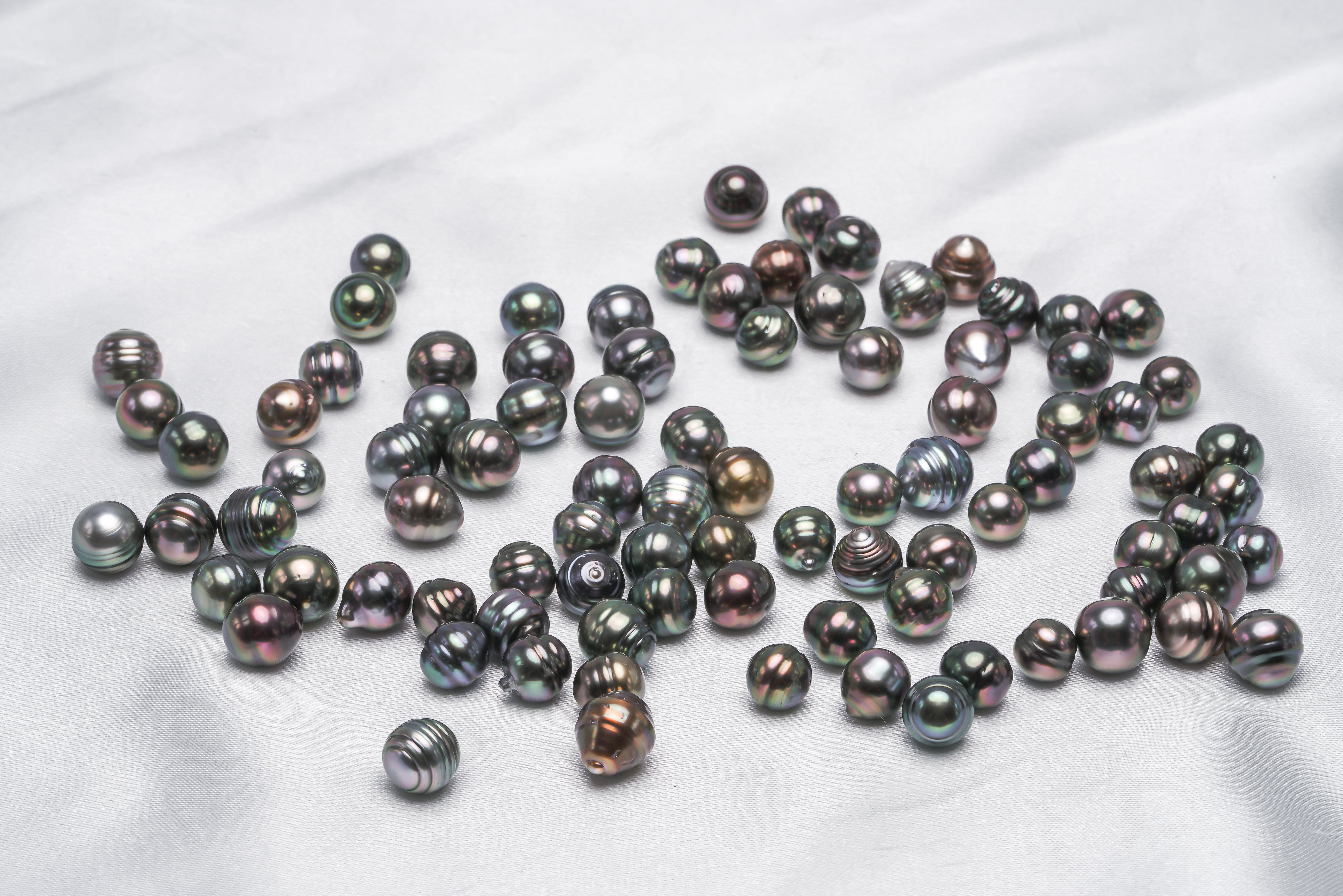
How can you tell a real Tahitian pearl?
The Tahitian Pearl shape, size, color, and luster are pretty unique, however it can also be difficult also to tell if the pearl is real. You should know that even if Tahitian Pearls are paired, the surface or luster of each one is likely to be different. Imitations are almost always one-size-fits-all, and they tend to be very similar to the original but rest assure that there are few tips to spot a fake one.
When Tahitian pearl are viewed in any light, the real deal will always shimmer and reflect its light. Fake Tahitian pearls are frequently sold with a smooth, matt surface and a perfectly spherical shape. It's important to remember that a genuine Tahitian pearl should reflect light. The shine of a Tahitian pearl is a criterion for determining the authenticity of a TOP Grade black pearl.
Here are some TIPS on how to tell if your pearls are real:
-The Luster of Real Pearls-
Cultured pearls are a product from nature - the mollusk always leaves its fingerprint on the gem during its creation, so you’ll usually be able to find some kind of imperfection somewhere if you look hard enough.
Synthetic pearls are usually either coated plastic, glass or crystal beads, and generally are visually perfect with very little to no variation in shape, size, luster or color/overtone.
-Feel The Weight-
Real Tahitian pearls are normally heavier than the fake ones. Feel the difference in weight by gently tossing them up and down in your hand. You can use this method to test those made from coated glass or plastic beads.
The only exception with this weight test is in the case of solid glass beads. Compared to natural or cultured pearls, they are significantly heavier.
Pearls made of plastic will be significantly lighter in weight.
In comparison to natural pearl, glass-coated pearls will easily break as they fall to the ground.
-Rubbing Two Pearls Together-
Pearl powder is formed when two genuine pearls are rubbed together. If you lightly scrub a real pearl with a knife, you'll get the same effect. When two imitation pearls are rubbed against each other, no powder is created and the process is smooth.
Two genuine pearls make a pleasant and unique sound when knocked together. Imitation pearls make a very low-pitched noise when they are slammed together.


-Different Drill Holes-
It is also possible to tell the difference between a real Tahitian Pearl and a fake pearl by examining its drill holes. When drilled, real Tahitian pearl have a rough surface and irregularities, it has a thin layer surface and inside the White nucleus inside the pearl but fake pearls have a smooth surface and perfectly round drill holes.



Leave a comment
This site is protected by hCaptcha and the hCaptcha Privacy Policy and Terms of Service apply.